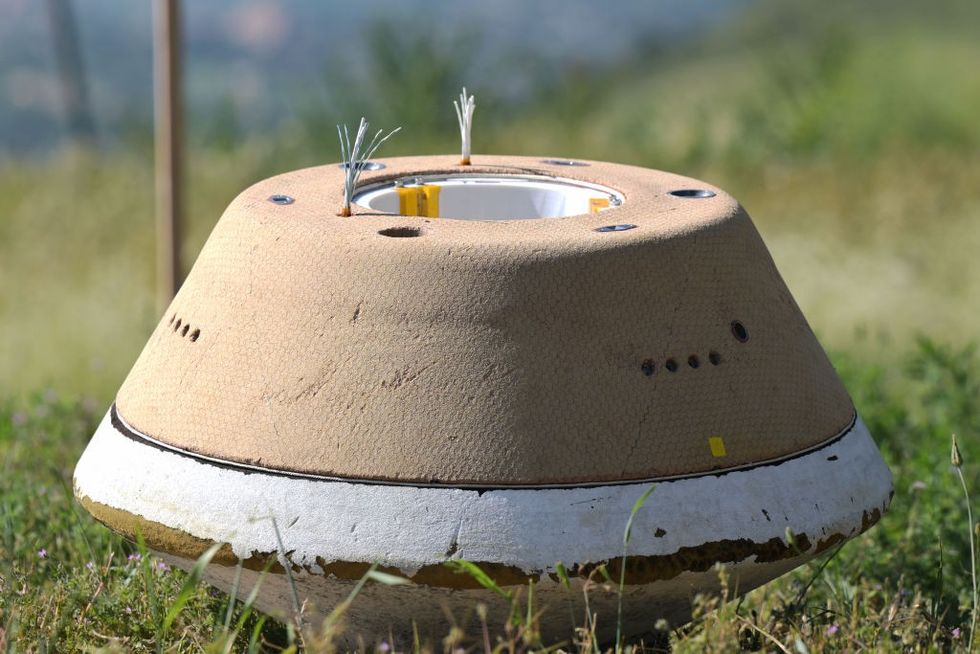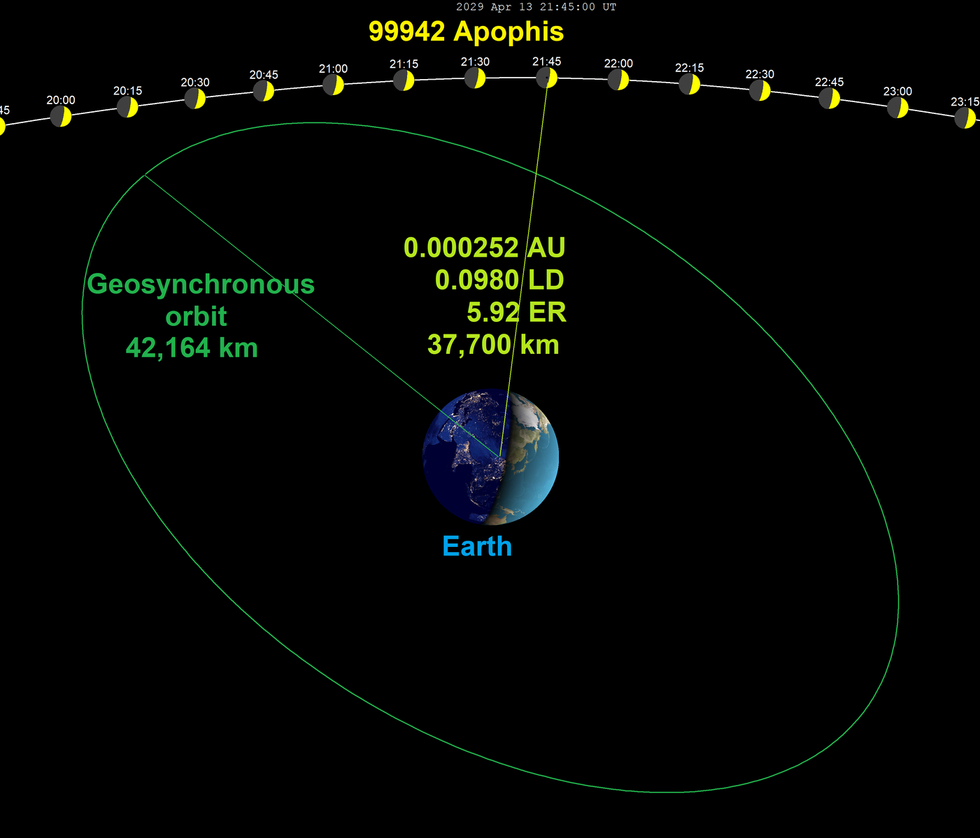An investigation has been launched by Nasa into the so-called “God of Chaos” asteroid that could reach the Earth’s orbit.
The asteroid, formerly titled Apophis, is due to fly by Earth in 2029.
Now, the OSIRIS-APEX spaceship has been sent to study the asteroid, which about 340 meters wide.
The passing of the asteroid will be a once-in-7,500-year event, according to NASA scientists and may be visible to some with the naked eye.
The asteroid is making its way towards Earth’s orbit
NASA
A spokesperson from Nasa said: “The intrigue of Apophis is its exceptionally close approach of our planet on April 13, 2029.
“Although Apophis will not hit Earth during this encounter or in the foreseeable future, the pass in 2029 will bring the asteroid within 20,000 miles (32,000 kilometers) of the surface – closer than some satellites, and close enough that it could be visible to the naked eye in the Eastern Hemisphere.
“Scientists estimate that asteroids of Apophis’ size, about 367 yards across (about 340 meters), come this close to Earth only once every 7,500 years.”
Apophis last made headlines around the world in 2004 when initial observations predicted it could hit earth in 2029.
LATEST DEVELOPMENTS:

The OSIRIS-APEX vessel
Getty

The predicted flight path of Apophis in 2029
WikiCommons
OSIRIS-APEX, previously known as OSIRIS-REx, recently returned from a trip to the space rock Bennu, where it was collecting samples and creating a mosaic image of the asteroid.
The mission’s project scientist Amy Simon said: “OSIRIS-APEX will study Apophis immediately after such a pass, allowing us to see how its surface changes by interacting with Earth’s gravity.”
Principal investigator for OSIRIS-APEX Dani Mendoza DellaGiustina added: “The close approach is a great natural experiment…we know that tidal forces and the accumulation of rubble pile material are foundational processes that could play a role in planet formation.
“They could inform how we got from debris in the early solar system to full-blown planets.”
In 2004, the 2029 collision was put at Level Four on the Torino impact hazard scale, which categorises the impact hazards of near-earth objects.
At the time, this was the highest score ever given on the Torino impact hazard scale.
However it was downgraded after just four days in December 2004.
The name Apophis is derived from the Greek for Apep, an enemy of ancient Egyptian sun-God Ra.

Dr. Thomas Hughes is a UK-based scientist and science communicator who makes complex topics accessible to readers. His articles explore breakthroughs in various scientific disciplines, from space exploration to cutting-edge research.








